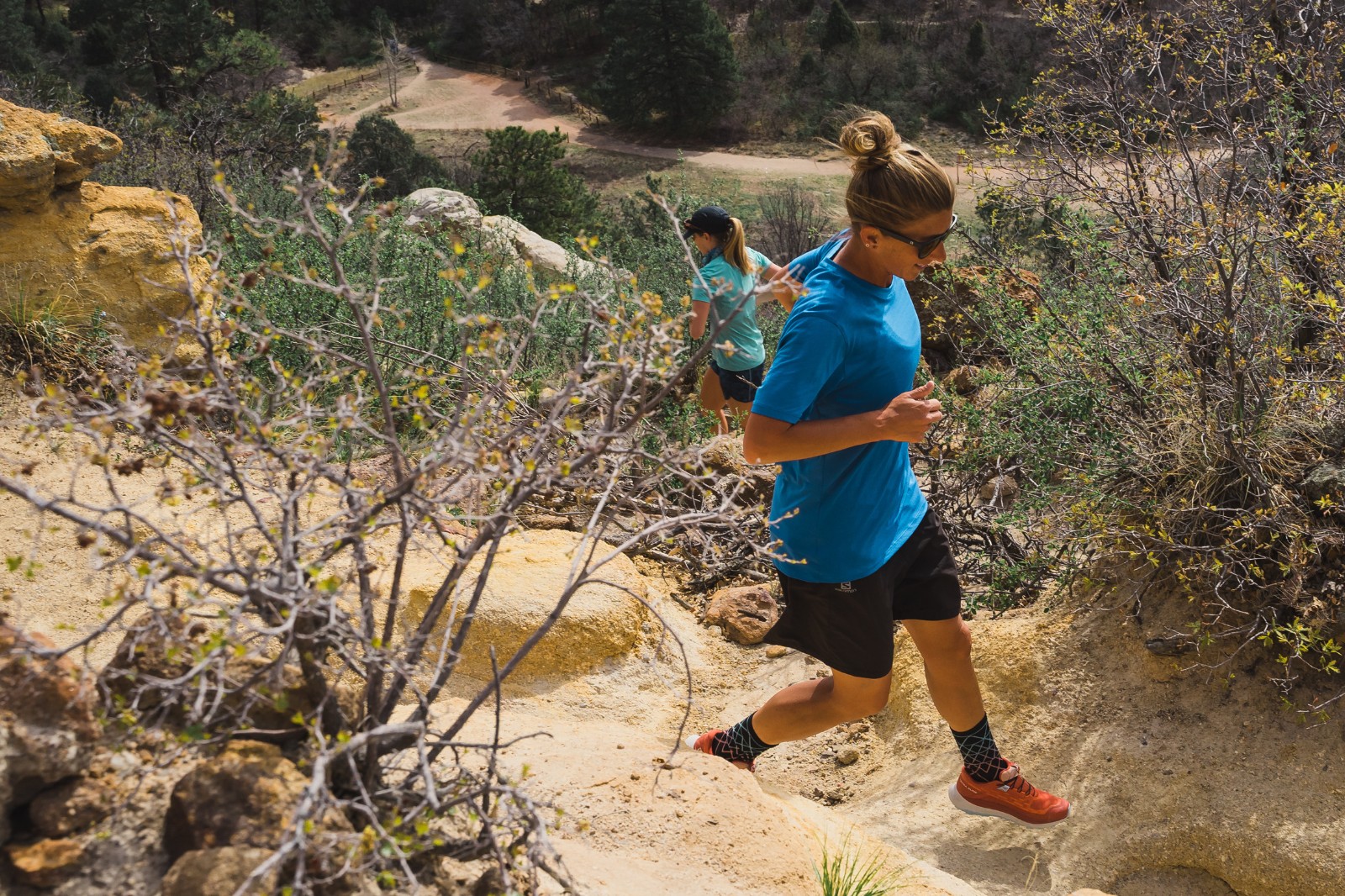
We independently review everything we recommend. When you buy through our links, we may earn a commission.
Start trail running, today
We tell you what you really need (and don’t need) for the trails
It’s not as intimidating as you think
Running is running, no matter the surface. But moving from the roads to the trails requires a mental shift: The same distance will take longer, stress your body in different ways, and generally calls for a higher level of preparation. Those are all good things, BTW. Getting off the beaten—er, paved—path has mental health benefits, can make you stronger, and gives you access to places you might otherwise never see.
You just have to be prepared for it: Start slow, be patient with yourself, and don’t get yourself into scenarios you’re not ready for. This beginner’s guide to trail running will help you find local trails, invest in the gear you need, and stay safe while sending it.
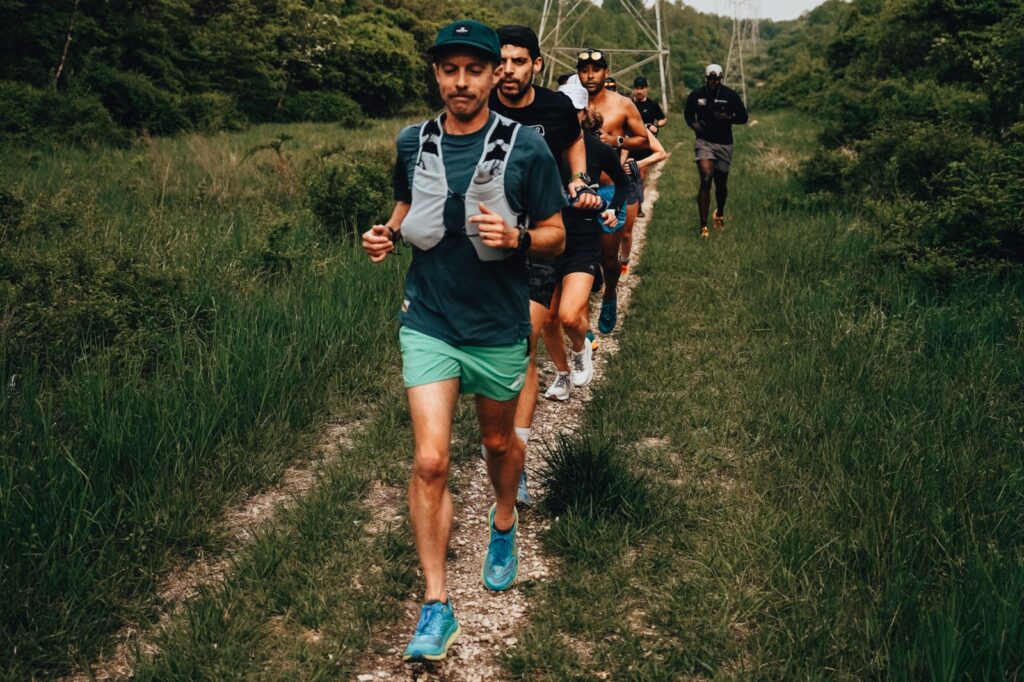
It goes without saying, but obviously things are different when it comes to these two types of running. With road running, it’s pretty much pavement and cement with a few bricks and boardwalks thrown in for good measure. Trail terrain, however, can come in a variety of flavors: dirt, mud, rocks, roots, gravel, and sand are all on the table. We’ll get into what you’ll need for different types of trails, but know that trail running and racing is quite often a mix of all of the above (and roads can still make an appearance).

Different surfaces demand different paces
When trail running, know that your runs will always be longer, even if you feel like you’re running at the same effort and even if you’re running on flat surfaces. It’s just a law of nature—you’re almost always running slower on softer surfaces. So plan accordingly when you’re heading out; trails easily add 30 to 90 seconds (or more) to every mile.
Lastly, trail running is just a different vibe. Sure, there are trail races, but they’re more like a backyard BBQ than a battle royale. Trail runners are probably the most accepting people on earth because pretty much everyone is there to have a good time in nature. Races often feature delicious food and beer supplied by smiling volunteers, and the trailgating after any race is an essential part of the experience and a time to hang with other laid-back runners.
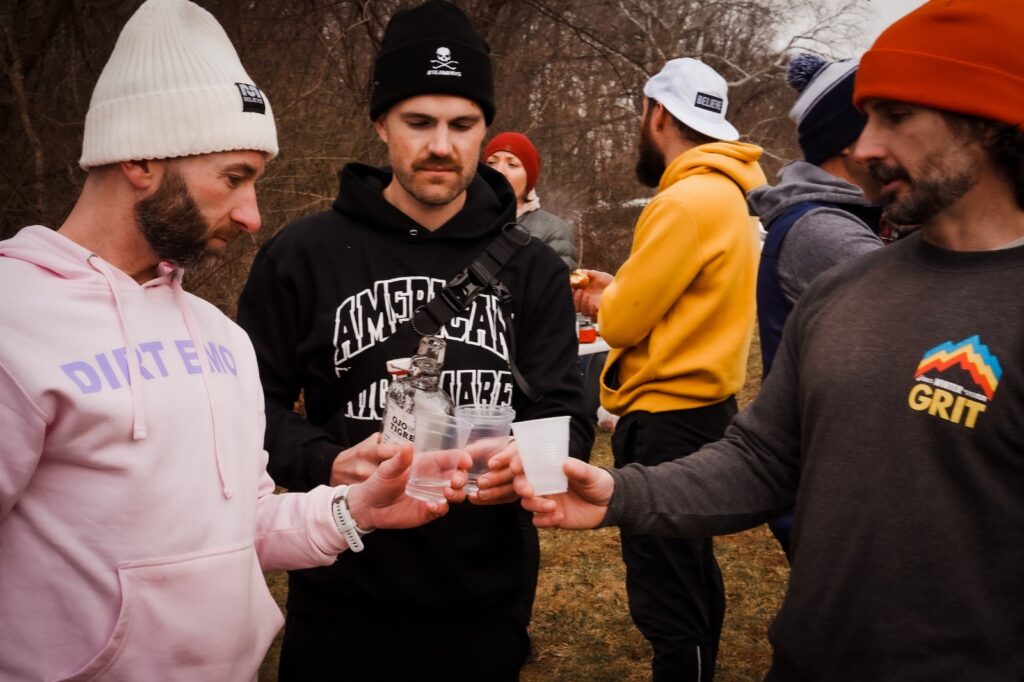
Trailgating is a time-honored tradition
Navigating a nice gravel path or a smooth dirt track is a very different experience from hoofing it up a highly technical, variable terrain. If you’re a total newb, check out your local parks—Central Park in New York City, for example, has a bridle path (it’s a mix of dirt and gravel) that stretches almost the entire length of the park—or less-trafficked gravel roads. Some cities even have protected paths specifically for runners and bikers, like the 71-mile High Line Canal in Denver.

Loose rock terrain
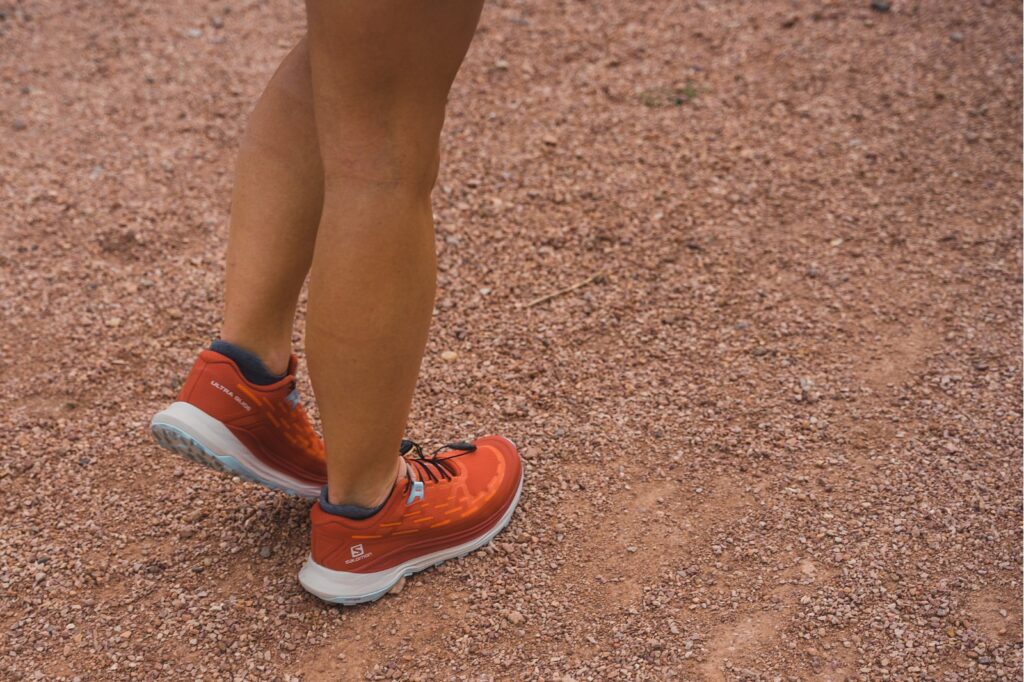
Gravelly terrain
If you live somewhere that doesn’t have public trails like that or you’re ready for more challenging terrain, an app like Trail Run Project or AllTrails can help you find nearby trails (you can filter by distance away, difficulty, length, elevation gain, and more so you know what you’re getting into). Otherwise, head to Strava for route suggestions or heat maps that show which trails are heavily trafficked. The types of trails in your area will determine what kind of gear you need, so it can be helpful to poke around these apps before investing.
Your road shoes will not translate to most trails (trust me, I once ended up on sandy single track in New England in my Asics Metaspeeds and it did not go well for my ankles). Some road-to-trail shoes do feature more aggressive lug patterns and will work just fine on buffed-out dirt, gravel, or fire roads (e.g. Nike Pegasus 40, Puma Velocity Nitro 2).
Like a car that’s kitted out with knobby tires, better suspension, and higher clearance, trail running shoes are like ‘roided up road shoes, with an emphasis on traction, foot protection, and stability. Those elements show up in features like lugged soles, which help maintain your grip on dirt, mud, roots, and rocks (for example, you’d want bigger lugs for soft dirt and mud, versus small lugs for packed dirt and rock); durable upper materials that can withstand abrasion and tears; rock plates that protect your soft underfoot from getting jabbed by rocks or roots; toe caps, or extra rubber at the front of the shoe the protects you from rocks and debris; and mud guards, gaiter attachment points, and breathable materials to keep your feet dry.
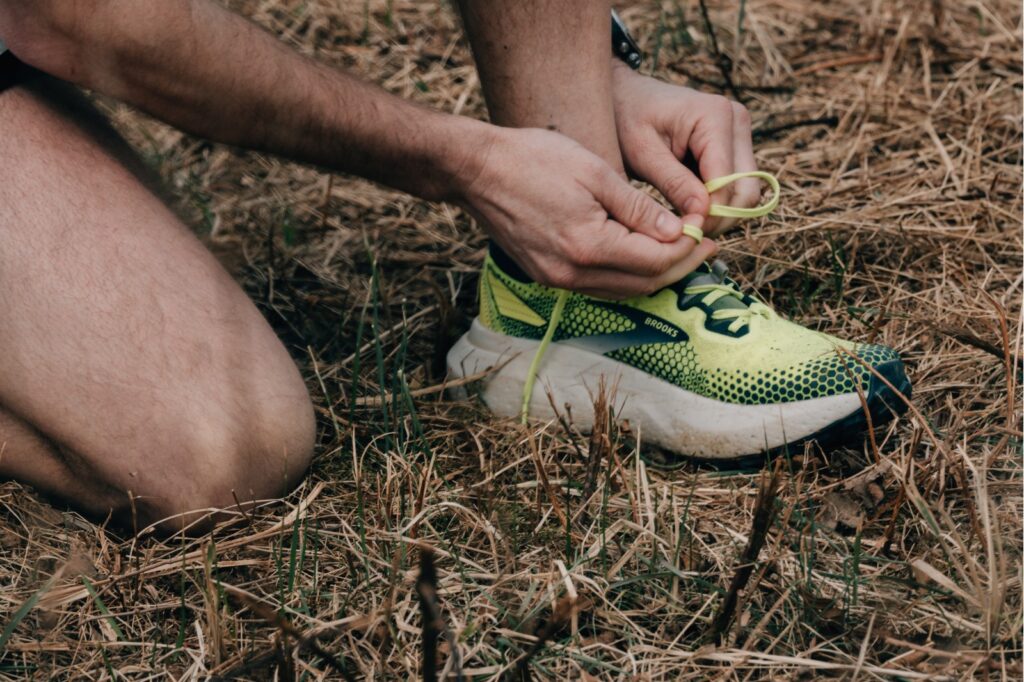
Like with road shoes, comfort is the number one thing to keep in mind. Generally, you want a lightweight shoe that fits well and serves the terrain that you’ll be running on most often. That said, running on trails requires more protection and more rubber underfoot, so know that “lightweight” has a different meaning in the trail world. In terms of comfort, the maximalist shoe trend has come to trail (see: the New Balance More Trail v3, Hoka Challenger ATR 7, Nike Zegama, Saucony Xodus Ultra 2, Brooks Caldera 6), and that kind of cushioning can reduce impact on joints and fatigue.
There are also lower-cushion trail shoes (Nike Terra Kiger 8, Adidas Terrex Speed Ultra, La Sportiva Jackal II) that allow you to better “feel” the terrain beneath you. And then there’s everything in between. There’s no single solution for trail runners; it’s up to you to do your due diligence on different models by trying on several pairs and figuring out what feels best. Luckily, you’re reading this on a shoe review site that provides the best trail reviews in the industry.
Need some help?
If you can’t figure out where to start when it comes to trail running shoes, here’s a good place. We promise you can’t go wrong with any of these great all-around trail shoes.
When you’re venturing away from civilization (which is generally the case on trails), it’s important to think about what kind of terrain you’ll be navigating, what kind of conditions you might encounter, and how long you’ll be out there.
Layers are crucial. If you’re running in the mountains, for example, the weather can change on a dime—you set out on a sunny morning, and all of a sudden afternoon thunderstorms roll in. Invest in a good sweat-wicking, quick-drying shirt or tank and running shorts, as well as a packable waterproof and wind-resistant shell (bonus points if it’s breathable, no one wants to be a swampy mess underneath). And clothes that have built-in UPF protection can help you avoid sun damage.
Some kind of pack can be helpful for storing those layers, as well as carrying fuel and water. On a short run, you can make do with a handheld, like the Nathan ExoShot 2.0, or a belt, like the CamelBak Ultra—or even shorts with a built-in belt, like the Rabbit Shredders or Smashems, which have six waistband pockets.
A vest is essential for longer outings; it allows you to carry a water bladder with room left over for carrying additional layers and fuel (I’m a big fan of the Ultimate Direction Race Vesta 6.0 ($130, women), which I used in a recent 30K in the mountains of Italy. Look for front pockets big enough to fit water flasks, smaller front pockets that allow you to easily access snacks, a back pocket for a larger bladder, an additional storage compartment for layers, and external hooks and loops that can hold things like layers or trekking poles.
Trekking poles can be hugely helpful on routes with lots of uphills and downhills, providing extra anchor points that keep you from overworking your quads and glutes and save energy overall. For beginner trail runners, you really shouldn’t need these as you’re starting out. However, for future reference, good ones—like the Black Diamond Distance Z Trekking/Running Poles—fold up to one to two feet in length, and barely add any weight to your pack.
And if you’re not running with your phone or you know you’ll be out of service for the majority of your adventure, a GPS watch, like the Garmin Fenix 7 or the COROS Apex that allows you to upload routes ahead of time so you don’t get lost is essential. Apps like Alltrails also allow for offline maps for premium users.
You could also go old school (mid-aughts old school) and take a screenshot of your route or a photo of the map at the trailhead so you don’t get lost. (Also, as with any run in a new or unknown place, share your route with a partner or friend just in case things really go off course.)
And on longer runs, save room for a small first aid kit (think: Band-Aids, antibiotic cream, sunscreen) in case of an emergency. You should also bring some toilet paper in a Ziploc bag in case of a bathroom emergency. Nothing worse than having tree bark or poison ivy as the only wiping options.
Unlike on the road, trail running is full of all kinds of variables that will affect how efficiently you move. All that variation underfoot contributes to a shorter stride that will help you maintain your balance. Aim to keep your feet underneath you at all times, and train your eyes on the ground about 10 to 15 feet ahead of you so you can spot any obstacles.
Your stride will also change on the uphills and downhills. When you’re climbing, short, quick steps—in which you’re landing on your forefoot— won’t overtax your lungs or your muscles. It’s tempting to lean forward, but that will actually make breathing harder; instead, lean forward from the ankles and keep your torso straight. Powerfully pumping your arms will also help you maintain momentum.

Even the least experienced trail runners can feel confident on the trails with this helpful guide
On longer or steeper climbs, don’t be afraid to embrace the power hike! Even the pros do it. It can actually be more efficient than running on inclines steeper than 15.8 degrees, according to research published in the Journal of Applied Physiology. That grade is just a suggestion, though; whether you’re more efficient running or walking depends entirely on your own fitness level. Pro tip: On steep inclines, use both hands to push off your thigh on the push-off portion of each step; in lieu of poles, it’s a great way to use your upper body to take some work off the legs.
When you reach a downhill, the key is staying confident and relaxed while picking up your cadence and scouting the trail ahead of you. Aim to land on your midfoot to maximize your balance. Again, don’t lean back; just like in skiing, leaning into the downhill will give you more control over your body. Speaking of skiiing, on steeper downhills, use a zig-zag switchback style of running to keep things from going out of control. And since gravity is doing a lot of the work for you, letting your arms flail—like you’re an inflatable tube man at a car dealership—will also help you maintain balance.
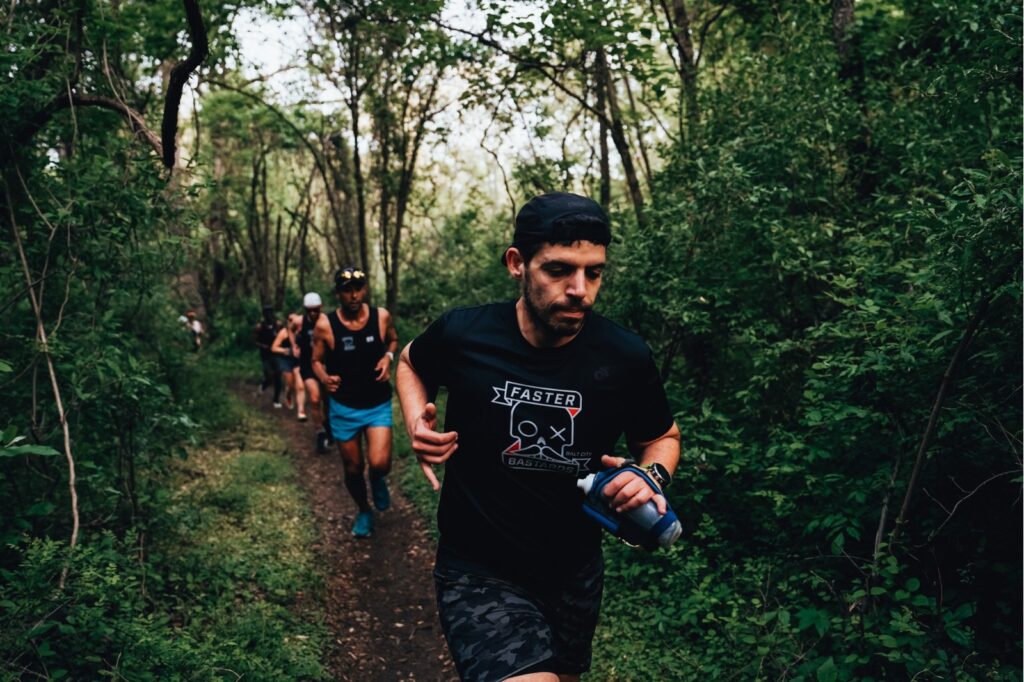
Soon, you’ll be leading the pack with the most elite trail runners in the world (or not)
There’s not a single road runner out there who wouldn’t benefit from occasionally hitting the dirt. It’s easier on the legs, so even working in a long trail run in place of a road run during marathon training will help you ensure a slower pace while giving your legs a bit of a rest.
Not only is it a literal form of escape from the daily grind, but the things that make trail running unique—the ups and downs, the changing terrain, the focus required to stay upright—will make you a stronger runner when you come back to the pavement.
Have something to say? Leave a Comment

Ashley is an award-winning journalist and editor whose work has appeared in The Wall Street Journal, TIME, Runner’s World, Women’s Running, Men’s Journal, Health, Women’s Health, Bicycling, and more. She’s also an RRCA- and UESCA-certified running coach based in Denver. Her main goal—through writing and coaching—is to make running accessible for everyone, because no matter how fast you are, we’re all just doing this for fun.
More from Ashley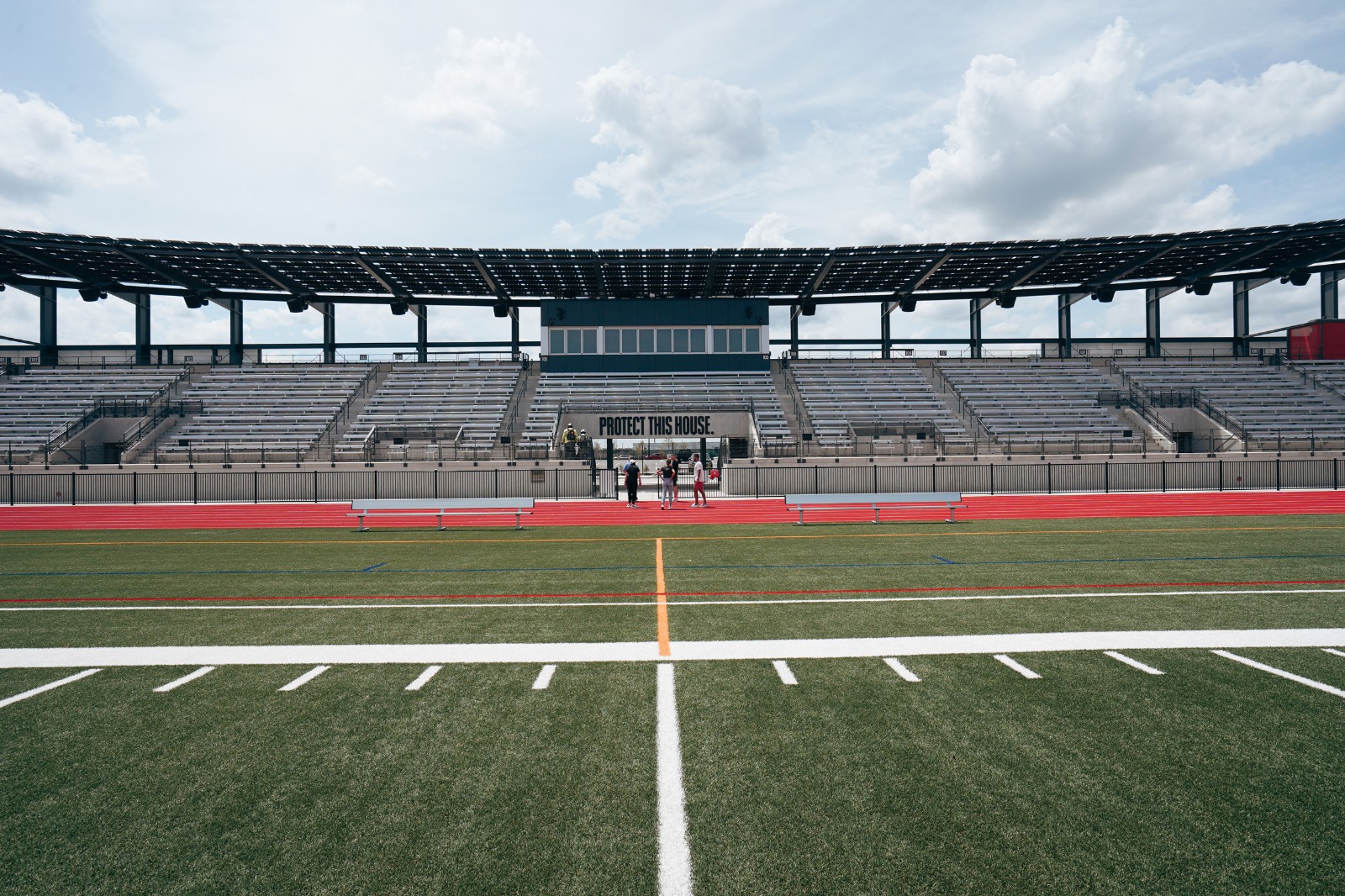
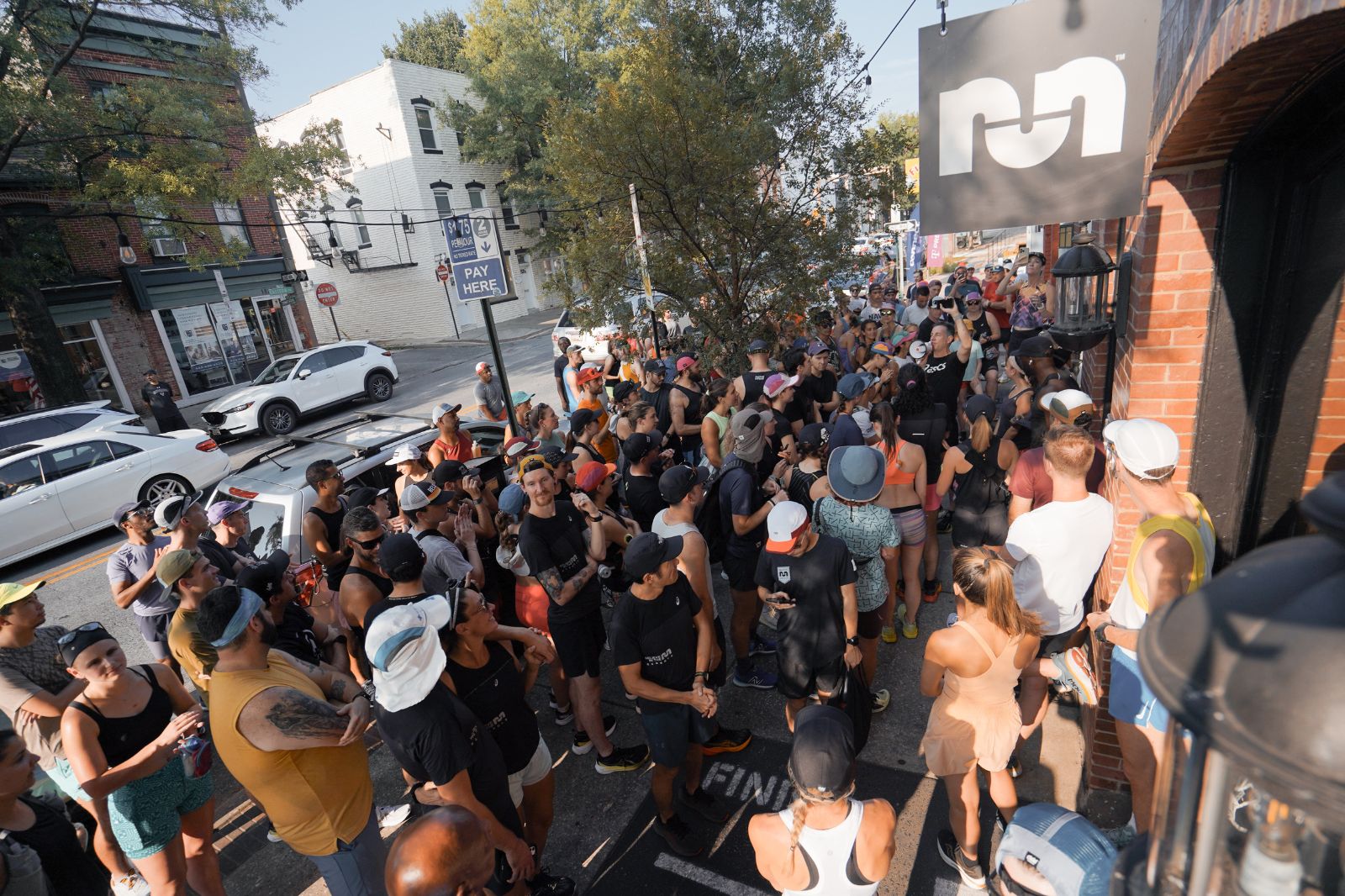
Great article. Love the attention to detail. Maybe as a supplemental article there could be a glossary of terms used in trail running. I learn what they all mean from Sam, a trail reviewer for the site but otherwise would know what terms like: FKTs, switchbacks, single track, fire roads, etc. mean.